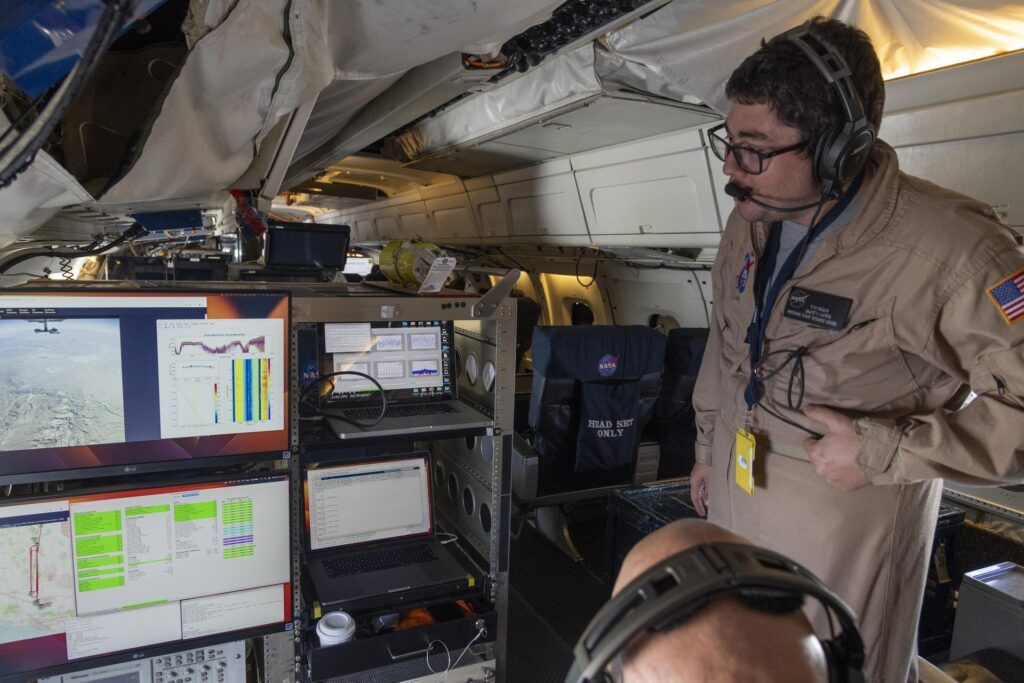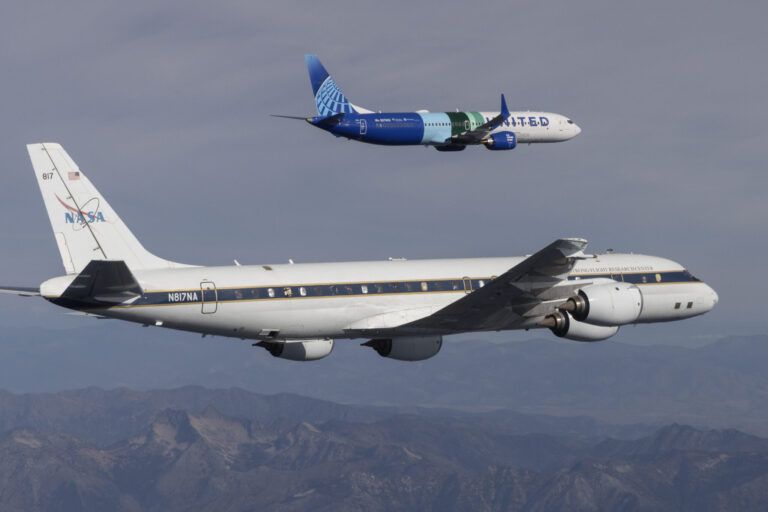NASA, Boeing and several other partners have conducted a contrail research campaign in Washington state, USA to examine how contrails from sustainable aviation impact the environment.
The flight testing, which was part of Boeing’s ecoDemonstrator program also involved GE Aerospace, the German Aerospace Center DLR, the FAA and United Airlines and was run last month. Its main aim was to generate data for researchers to assess how the use of sustainable aviation fuel’s (SAF) affects contrails.
Research indicates that contrails may trap heat in the atmosphere, adding to the impact of aviation on climate change. However, it is hoped new, greener aviation fuels can help reduce the problem.
For the project, Boeing’s second ecoDemonstrator Explorer aircraft, a 737-10 powered by CFM Leap-1B engines conducted a series of test flights switching between tanks filled either with 100% SAF or a low-sulfur version of conventional jet fuel.
NASA’s DC-8 aircraft, the world’s largest flying science laboratory, followed to measure emissions and contrail ice formation from each type of fuel. The data collected by the DC-8’s instrumentation will help determine whether SAF helps to reduce the formation of contrails.
Rich Moore, a research physical scientist in NASA’s Langley Aerosol Research Group Experiment and principal investigator for the campaign said, “Contrails are believed to be a major source of pollution. With this flight campaign, we’re looking not so much at correcting contrails, but at preventing them.”
NASA provided the DC-8, which is based at NASA’s Armstrong Flight Research Center in Edwards, California, for the flight test campaign and a mobile laboratory for ground testing.
The results of the research will be published in around 12 months .
“One of the most amazing things about this collaboration is that this data will be released publicly to the world,” said Moore

Contrail conundrum
Contrail clouds can have both localized cooling or warming effects depending on conditions and timing, but computer modeling suggests their warming effect is greater on a global scale.
Over the past several years, NASA has worked with partners to match those models with observations, working to understand how and when contrails form, and their impact on the environment.
Jet engine exhaust includes water vapor and soot particles. Contrails form when aircraft operate in the cold temperatures at high altitudes. The water vapor in their exhaust cools and condenses, and when it interacts with either the soot or other particles in the air, it forms ice crystals. Those contrails can linger in the upper atmosphere for hours, producing localized temperature impacts, which over time can affect climate change.
Alternative fuels, including SAF, can release fewer soot particles. Research models find that this should result in fewer crystals, and the ones that do form will be larger, falling and melting in the warmer air below – reducing contrails’ environmental impact.
Data for improved understanding of contrails
GE Aerospace, which deployed a team of engineers to support the tests, will use the data on its RISE program. First unveiled in 2021, RISE is developing a suite of engine technologies including new architectures like open fan, as well as compact core advancements including the combustor.
RISE aims to achieve 20% better fuel efficiency and 20% fewer CO2 emissions than engines today, while also reducing noise and non-CO2 emissions.
David Ostdiek, the CFM RISE systems team’s aerothermal leader said, “As we’re inventing the next generation of engines with the RISE program, we really want to understand the science around non-CO2 emissions.
“Our team is responsible for integration of the POC disciplines: performance, operability, controls,” Ostdiek said. “That means understanding how the engine operates and why it operates as it does, and modeling the overall system. The more data we get on climate effects, the better we’ll be able to make minimizing them a new key requirement.”
The German Aerospace Center involvement follows a joint flight research campaign known as ND-MAX which concluded in 2021. The campaign involved the DC-8 testing contrails left by an A320 airliner operated by the German Aerospace Center that used biofuels.
In 2013 and 2014, NASA also led a series of research flight programs utilizing smaller, business-class jets called Alternative Fuel Effects on Contrails and Cruise Emissions.
This article has been edited from the original by Erica Heim, NASA Armstrong Flight Research Center.





